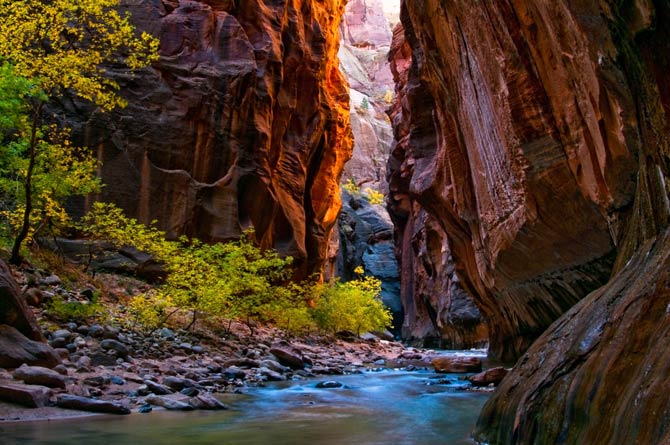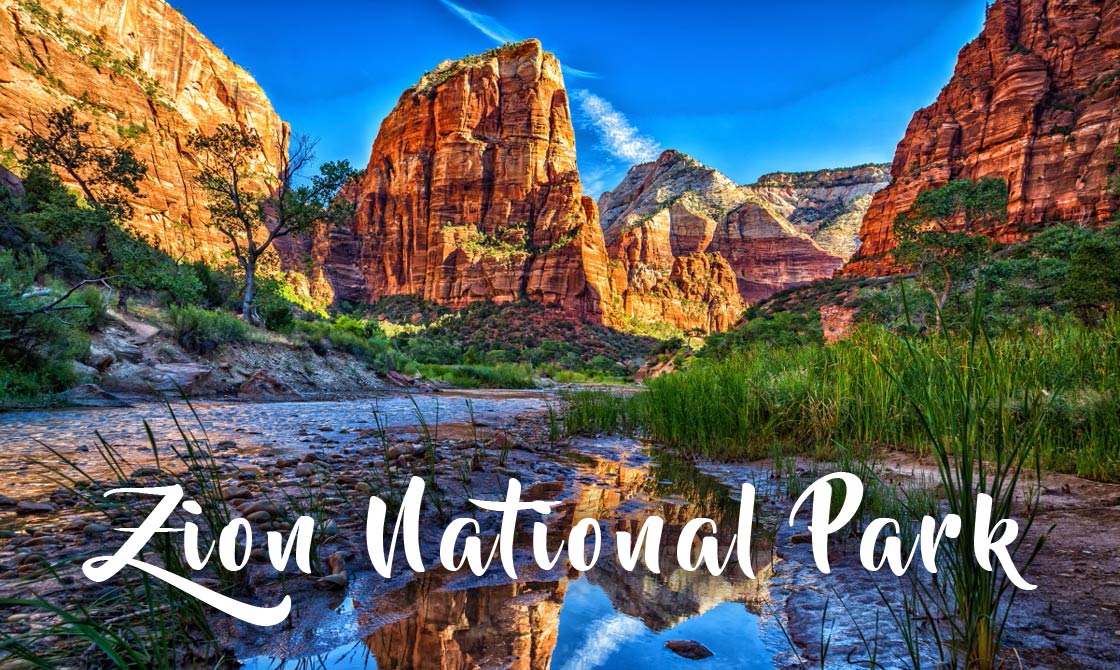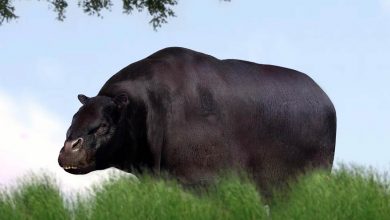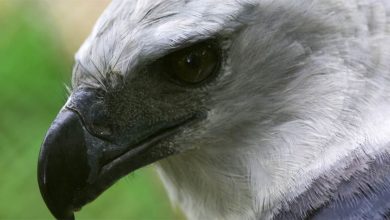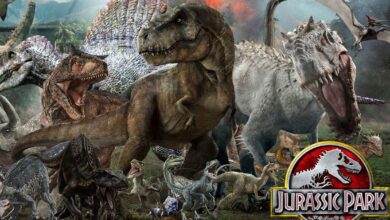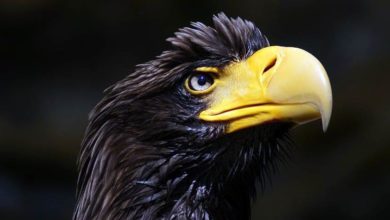Zion National Park – the stunning beauty of rock formations
Few people know that there is an equally interesting place with unusual rock formations near the Grand Canyon. The Zion National Park, in question, is an area where you can find picturesque narrow labyrinths in gorges, hidden waterfalls with crystal clear water and most importantly admire the varied geomorphology of the place. High plateaus, steep rimrocks and sandstone cliffs built over thousands of years by nature are the hallmarks of the Zion National Park.
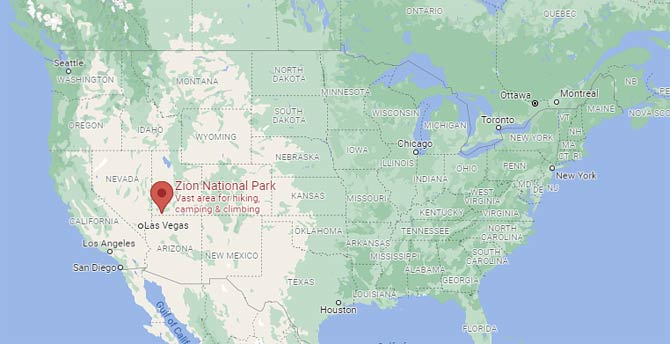
Location
Zion National Park is located in the United States in the southwestern part of Utah, over 200 km north of the Grand Canyon and has 593 km2 (229 mi2). The park covers an area in the western part of the Colorado Plateau and is cut by the Virgin River valley.
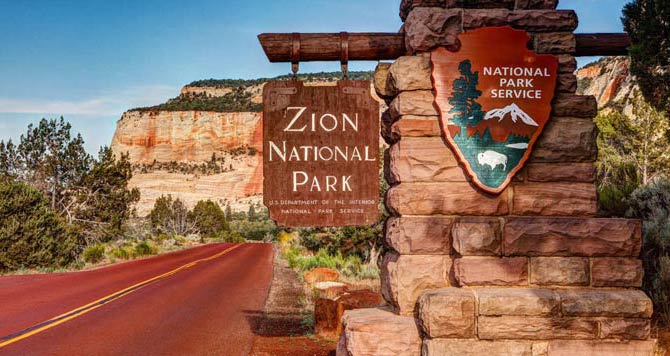
Name and history
Over a thousand years ago, the park was inhabited by the Anasazi Indians, and then replaced by the Paiutes. At the end of the 19th century, Mormon settlers came to the state of Utah and they named the place Zion, because there are almost paradisal views there.
The site was placed under protection in 1909, initially as a national monument under the name of Mukuntuweap National Monument. In turn, in 1919, the protected area was enlarged and thus qualified as a national park, giving it its present name.
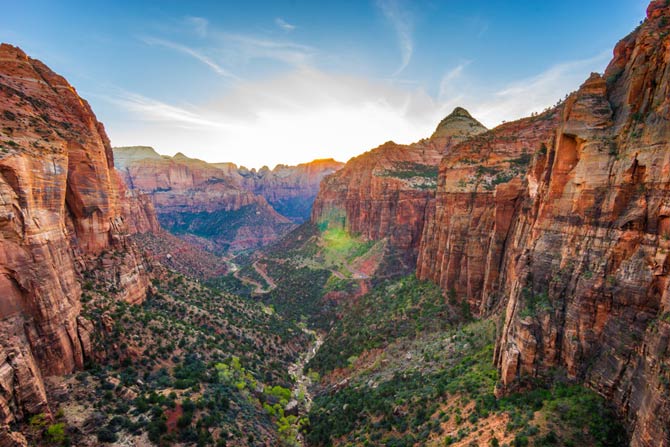
Geology
The process of forming Zion Park began over 250 million years ago. At that time, the area was covered by a shallow sea and huge, lazy-current rivers that were surrounded by wetlands. Probably at the time of geological formation of the substrate, there was a desert in this area, perhaps even the largest one in the history of our planet. Colorful cliffs, almost 600 meters (1,970 ft) high, have been carved in the dunes of this desert.
The park is located at an altitude of 1,117 (3,666 ft) in the southern part, to 2,660 meters (8,726 ft) above sea level near the northern part. One of the geological processes that took place in the park is sedimentation, i.e. the accumulation of sediments layer by layer in one place.
The canyons of Park Zion are made of red sandstone and were created in the Jurassic period, among others through the process of accumulating red sandstone sands. The line structure can be seen everywhere, but especially on the wall of Checkerboard Mesa, in the eastern part of the reserve. 800 meters (2,640 ft) deep, the Zion canyon has been carved into the rock by the lazy waters of the Virgin River over the past 13 million years.
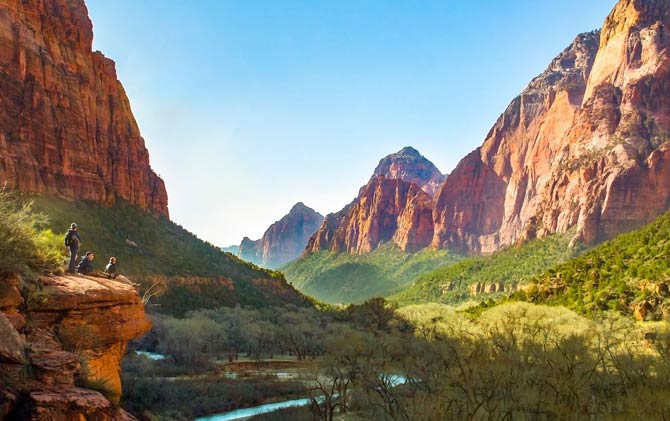
Canyons and waterfalls
Hidden waterfalls among huge rock formations are an interesting surprise for tourists while hiking along the bottom of the canyon. The famous Zion Canyon Scenic Drive leads through the park, from which you can admire the beauty of the canyon.
Among the places where tourists visit the most often are: Angels Landing, Virgin Rivers Narrows, Three Patriarchs: Abraham, Isaac, Jacob, Great White Throne, Temple of Sinawava, Subway Canyon, Observation’s Point, Emerald Pools.
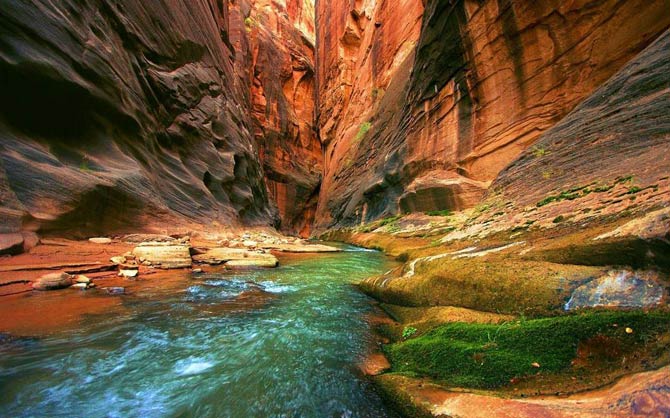
Zion canyon
The biggest attraction of the park is undoubtedly the Zion Canyon of the Virgin River, which is also the largest canyon in the reserve. The essence of the Park itself is a narrow, deep gorge in the western part. Of course, it is also the most important travel destination.
This place is a great vantage point as it offers a breathtaking view of the entire Zion Park. What’s more, access to it is easy, because tourist buses run there.
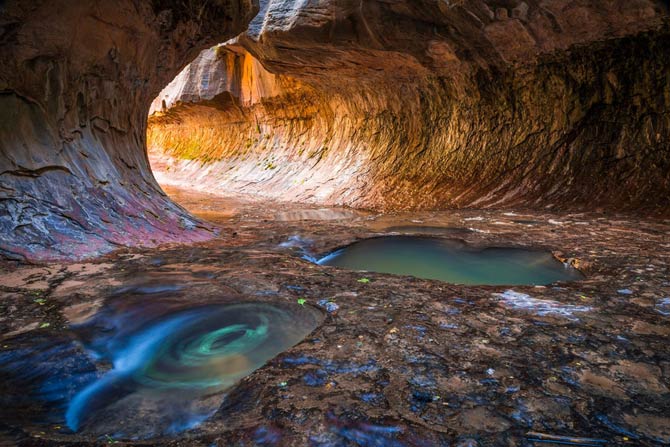
Subway
There are many routes in Zion National Park that run along the mainstream of the Virgin River. Canyons, carved in historic times by the waters, sometimes lead to places that you might think don’t really exist. One of them is the Subway underground pools. You can walk there along the Left Fork of North Creek.
The journey is not the easiest one and is recommended for those who want to treat themselves to a bit more adrenaline than usual 🙂 This place is a special treat for photography enthusiasts due to its sand sculptures and crystal clear water. However, to enter this trail, you need a permit from the Park administration.
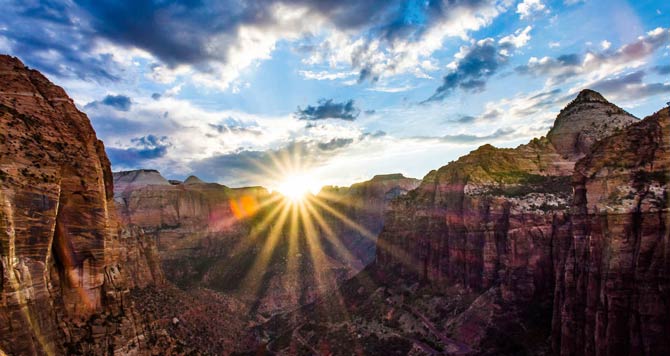
Fauna and flora
High temperatures, a small amount of rain during the year and dry winds are not favorable to the delicate vegetation. Nevertheless, the Zion National Park has a beautiful flora. There are over a thousand species of plants there. In early spring, there are, among others, numerous wild flowers.
Almost all year round, you can also admire tall poplars along the river, tall pines and firs at the highest elevations, and various species of cacti (e.g. Cholla), yucca and prickly pears for which desert conditions are the norm.
There is also a rich fauna in the park. There are over 6 species of amphibians, 28 species of reptiles, 7 species of fish, 289 species of birds and 79 species of mammals, most often including small rodents, pumas, lynxes, coyotes and gray foxes (Urocyon cinereoargenteus).
Most often you can meet there: lizards, snakes, turtles, porcupines and owls. There are golden eagles, red-tailed hawks, peregrine falcons, white-throated swifts, reintroduced California condors and bats also live here.
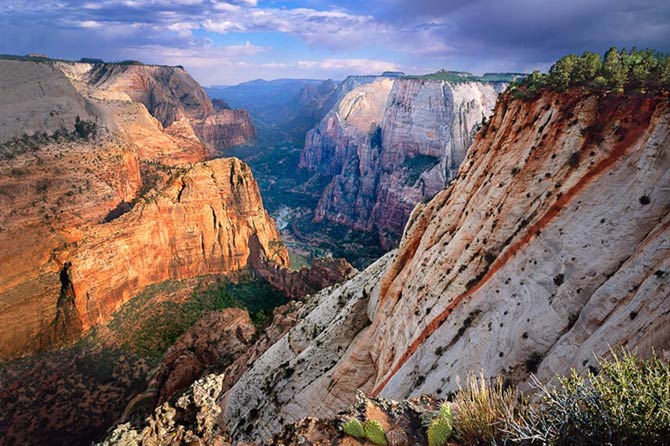
Additional attractions
In addition to the possibility of hiking in the wild sandstone corners, there are many footpaths of various lengths in the park. Thanks to this, we have the opportunity to admire the beauty of almost the entire Zion Park. The most popular routes are Emerald Pools (3 km / 1.87 mi), Weeping Rock (2 km / 1.24 mi) and Riverside Walk (3 km / 1.87 mi).
A trail called Pa’rus Trail has been created especially for cyclists, which runs through most of the Park. Adrenaline enthusiasts can descend into the canyon on the rocks with protection and climb up the several hundred meters high cliffs.
The youngest visitors will enjoy a ride on the back of a horse, and for those who like peace and quiet, guided hiking tours, during which tourists break through the waters at the bottom of the Zion canyon.
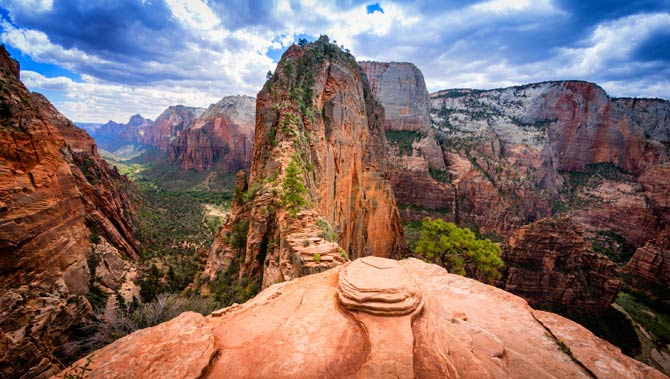
Practical information
- The best time to visit Zion Park is in early spring, when the flowers of various colors are blooming, or in early autumn due to the comfortable temperature.
- The park is open 24 hours a day, and people who walk, motorbike or bike must pay $ 12. Admission is free for people under 15 years of age.
- It is best to visit the park from the south, because in the Zion Visitor Center you can buy the maps you need, but also learn more about the attractions.
- Wild camping is allowed in the park, but only in designated areas.

Detailed data
Zion National Park
- Area: 593 km2 (229 mi2).
- Founded: 1919
- Selected attractions:
- Subway
- The Narrows (Virgin River Gorge)
- Angels Landing (previously Temple of Aeolus)
- Kanarra Falls
- Emerald Pools
- Records:
- In 2017, the park was visited by 4.5 million tourists, which is a record result.
- Zion Canyon is the largest of all in Zion Park
- In the northwest of the park is the Kolob Arch, which is one of the largest natural rock arches in the world.
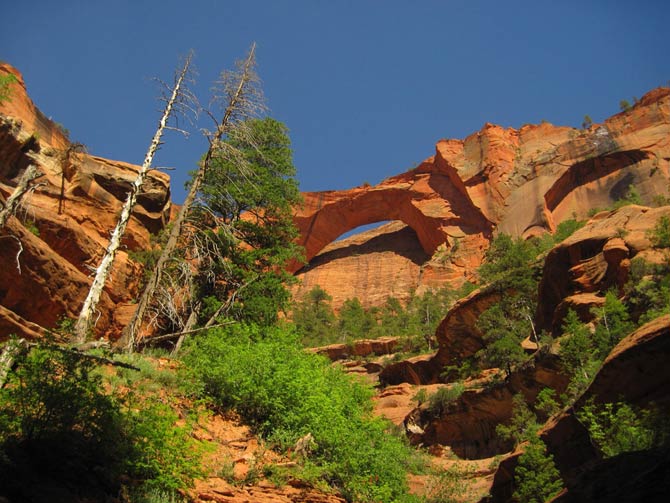
Zion national park – interesting facts
- The rapid development of tourism in the park occurred in the second and third decades of the 20th century
- On April 12, 1995, around 2 am, a landslide occurred in the park. About 75,000 m³ of rock and earth had fallen, temporarily blocking the flow of the Virgin River.
- Zion National Park was on the route of the Olympic relay race carrying the Olympic torch ahead of the 2002 Winter Olympics in Salt Lake City.
